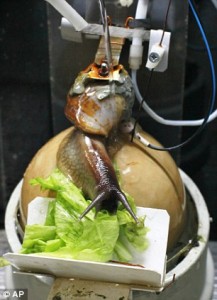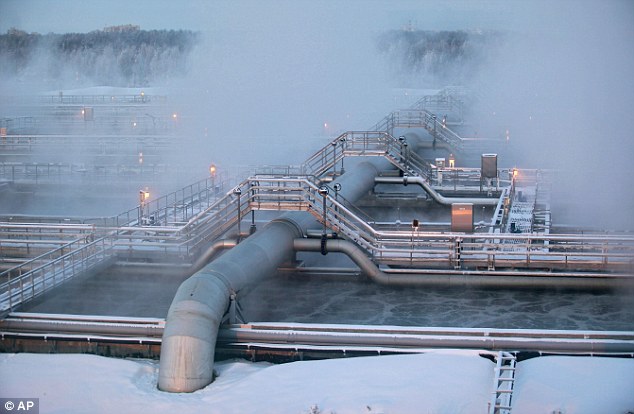by Jaymi Heimbuch, San Francisco, California on 01.18.11
We’ve heard of giant snails used as a great food source for undernourished communities, and even used as a way to save gorillas. But now, can the miracle creature also help Russia with air pollution problems?
According to PhysOrg, a Russian waterworks facility is using six Achatina snails, or giant African snails, to test a way to monitor pollution from its sewage incinerator. Fitted with heart monitors and motion sensors, the snails — which have lungs and breathe air — will go about their business while researchers take readings and determine the pollution levels in the air coming from the incinerator.
Apparently the move isn’t without controversy, as some call it a simple publicity stunt.
“Burning sludge emits toxic dioxins,” said Dmitry Artamonov, who heads the the Saint Petersburg office of Greenpeace environmental campaigning group. “I don’t know if snails get cancer, but even if they do, it won’t happen straight away, and we will not hear about it from Vodokanal.”
Beyond that, the use of snails, rather than more technologically advanced air pollution meters, is a rather odd move. And if there are significant levels of pollution coming from the incinerator, then it could be considered a bit cruel as well. If they’re simply experimenting with new innovations in pollution monitoring, that’s one thing, but it’s a weird move if they’re looking for reliable pollution levels information.
Mollusc maintenance: Six African snails fitted with heart monitors and sensors are being used to monitor pollution levels at a sewage treatment site in St Petersburg
Snail sewage? Three of the creatures breathe clean air, while three have air from the chimney at the incineration plant
Novel approach: The South-West Waste Water Treatment Plant in St Petersburg, where the snails live



